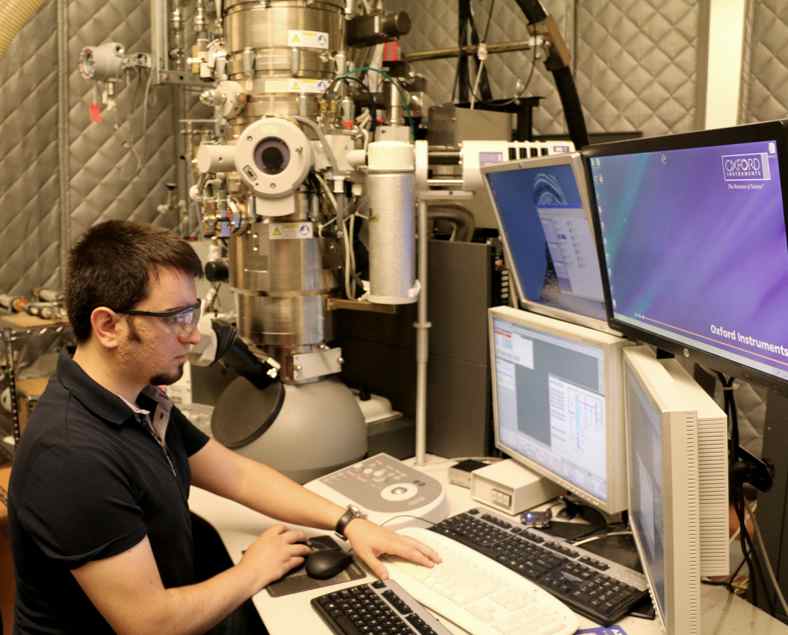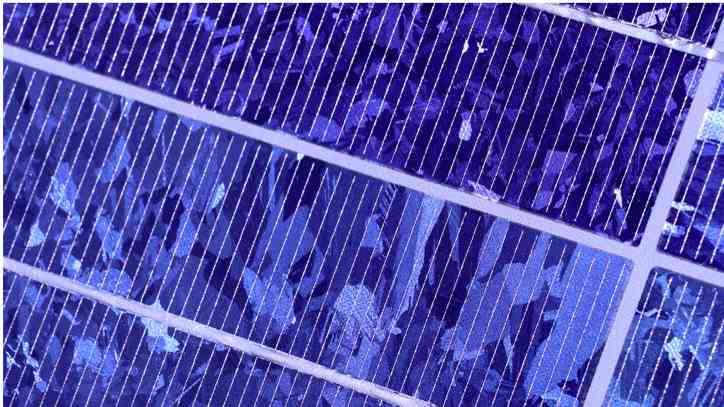Start-Up Nano-Meta Technologies Using Plasmonics to Advance Optical Technology
And improve storage capabilities and solar cell performance
This is a Press Release edited by StorageNewsletter.com on October 17, 2014 at 2:54 pmA Purdue-based start-up is developing high-temperature plasmonic metamaterials that could increase data-storage capabilities, improve solar-cell and waste-heat recovery performance and provide a new avenue for clinical therapeutics.

Urcan Guler, postdoctoral Purdue student and senior scientist for Nano-Meta Technologies works in a laboratory in Discovery Park’s Birck Nanotechnology Center. (Purdue Research Foundation photo/Oren Darling)
The plasmonic metamaterials, which are man-made composites of metals with engineered optical properties, are being developed to create novel optical nanodevices.
The technology, which is being commercialized by Nano-Meta Technologies Inc., was developed in the laboratories of Vladimir Shalaev (pronounced SHA-la-eve), distinguished professor of electrical and computer engineering and the company’s scientific director, and Alexandra Boltasseva (pronounced BOL-ta-see-va), associate professor of electrical and computer engineering and chief R&D scientist for Nano-Meta Technologies.
“What is promising about this technology is its ability to harness ‘surface plasmons.’ Doing that enables us to do more than control light – we can manipulate it,” Shalaev said. “As we guide or route the light at the nanoscale level, we can develop more powerful microscopes, more efficient thermophotovoltaic solar cells, increase storage and improve medical treatments.“
Nano-Meta Technologies has licensed the technology through the Purdue Office of Technology Commercialization.
Boltasseva said the company is able to tailor the plasmonic metamaterials for different applications by using their patented processes in material fabrication and development.
“We are doing this by tailoring the materials to optimize their properties and making nanoscale unit cells,” she said. “For example, to increase data-storage densities we are developing new materials for heat-assisted magnetic recording capability, which uses heat to record data on a magnetic disk.”
The materials also could be used for solar thermophotovoltaics to improve solar-cell efficiency. Current solar cells have an efficiency of about 15%. In theory the efficiency might be improved to as high as 85% with solar thermophotovoltaics. The plasmonic layer acts as a thin ‘intermediate spectral converter’ that absorbs the entire spectrum of sunlight and then illuminates the solar cell at the selected optimized wavelength, thereby dramatically increasing the solar-cell productivity.
The spectral converter is an extremely thin layer of metamaterial that uses plasmonic nanoantennas to absorb and emit light. The layer might be as thin as 500nm, or half of a micron, roughly one-hundredth the width of a human hair. This layer of material would be heated by sunlight to about 1,500°C.
Thermophotovoltaic technology can also be applied as a waste heat recovery method, where the radiation from high temperature objects such as an industrial furnace, or a vehicle engine is spectrally engineered to match photovoltaic cell bandgap, leading to high efficiency energy conversion from heat that is wasted otherwise.
The challenge Nano-Meta is resolving that can make the optical technologies more applicable to various uses is by replacing the conventional use of gold and silver in the plasmonic components because these metals cannot withstand high temperatures.
“We are using, for example, titanium nitride and zirconium nitride because these materials have exceptional strength and can withstand the high temperatures needed for performance and efficiency,” said Urcan (pronounced Ooor-Jon) Guler (pronounced Gooler), postdoctoral research associate working with Shalaev and Boltasseva and a chief scientist for Nano-Meta Technologies. “But we also have identified other classes of materials for specific optical applications including transparent electrically conducting oxides and graphene-ultrathin layers of carbon.”

Solar cell technology being developed by Nano-Meta Technologies could increase solar cell efficiency from about 15% to 85% by using solar thermophotovoltaics. The technology was developed in the laboratories of Shalaev and Boltasseva.
The company is using titanium nitride nanoparticles in its clinical therapeutic concept with nanoparticle-based thermal medical therapeutics.
“The nanoparticles could be injected into the bloodstream so that they accumulate in tumors,” Guler said. “This could allow clinicians to shine a certain wavelength of light on these nanoparticles from outside the body, causing the particles to heat up and kill the cancer cells.”
Nano-Meta Technologies, which is based in the Purdue Research Park of West Lafayette, will initially focus on three applications: the heat-assisted magnetic recording, solar/thermophotovoltaics and a new clinical therapeutic approach. CEO is Serguei Kouzmine, Ph.D. in nuclear physics. Degree in Business Administration from the University of Chicago Business School; member of the Beta Gamma Sigma Honor Society. Over 20 years of entrepreneurial experience. As CEO of Ritzio Entertainment Group led the company from $40 million in revenues in 2002 to $1.25 billion in 2006.
Nano-Meta Technologies is one of more than 20 start-ups based on Purdue intellectual property that were launched in the 2014 fiscal year.












 Subscribe to our free daily newsletter
Subscribe to our free daily newsletter
